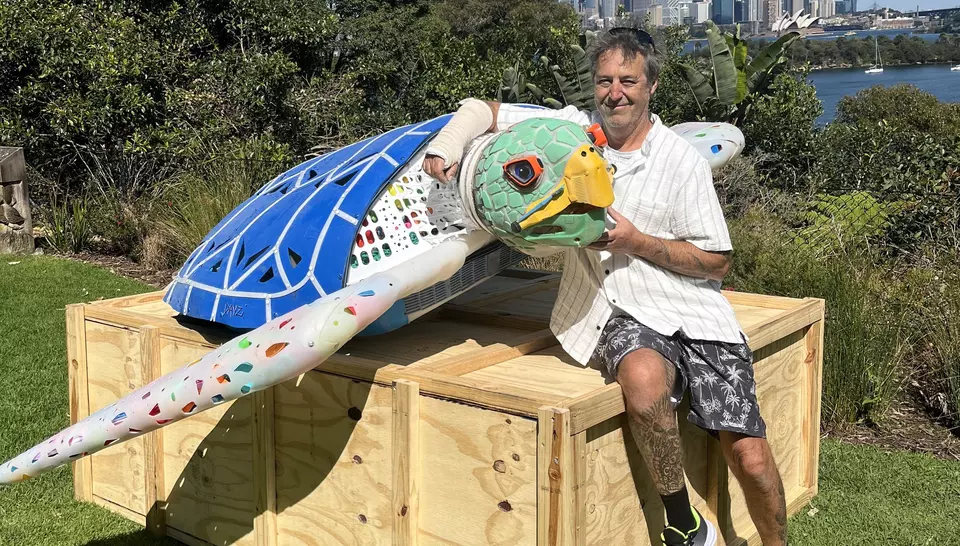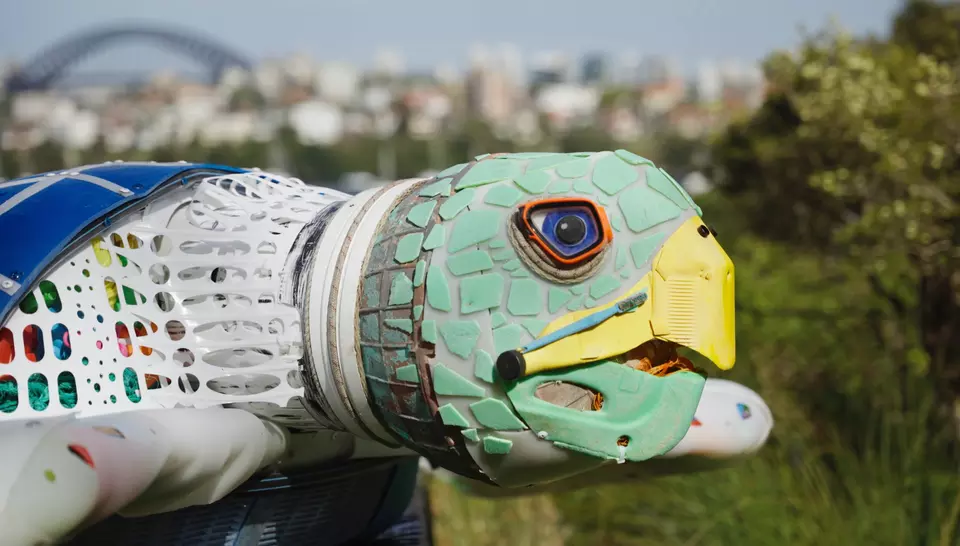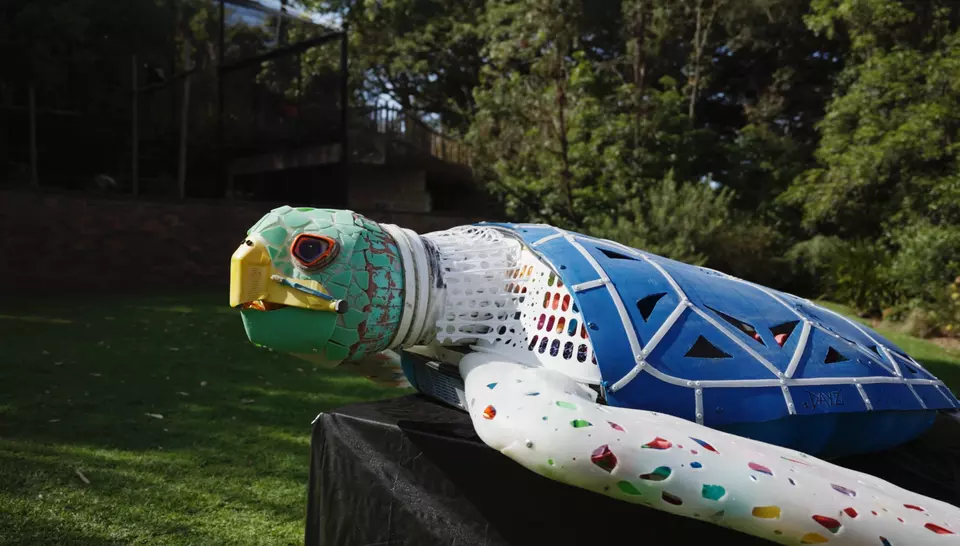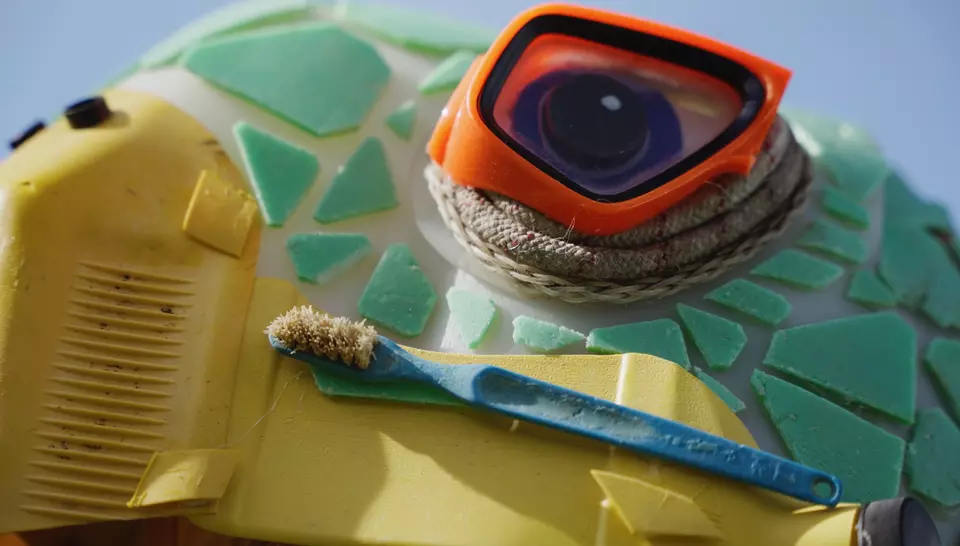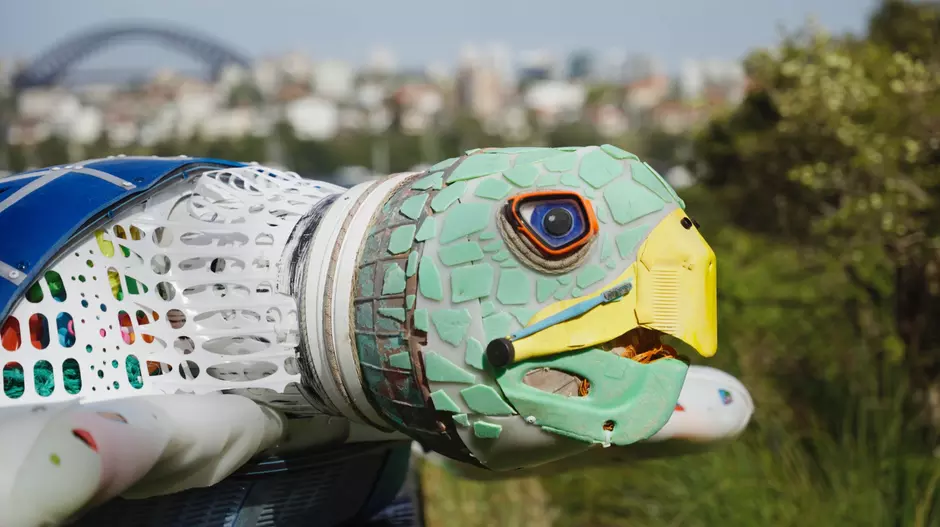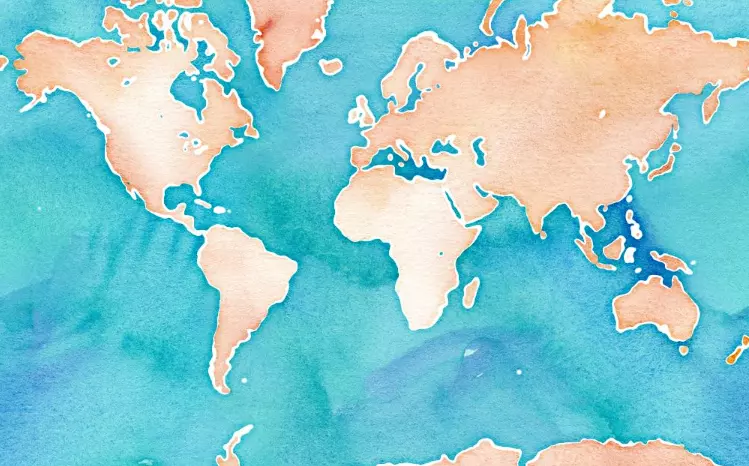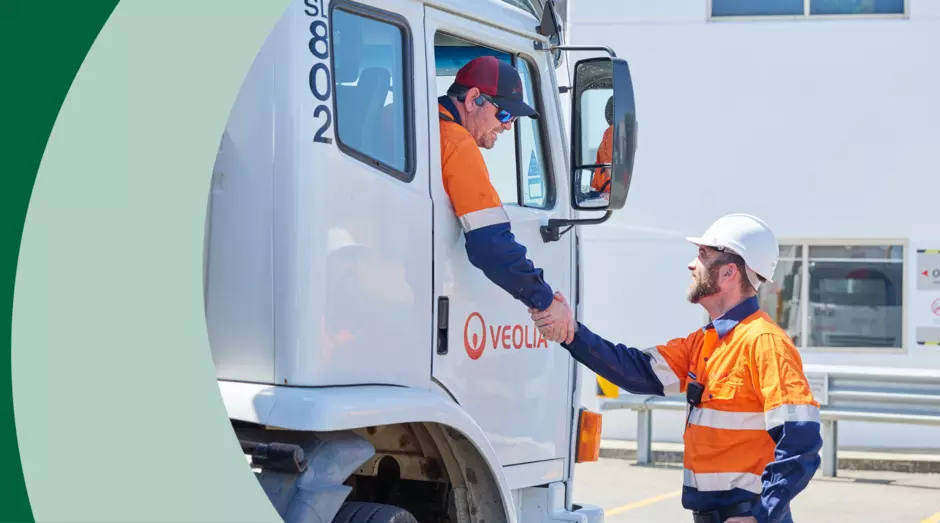David Day is the artist commissioned by Veolia to create a giant turtle sculpture to be displayed at Taronga Zoo from September 25 to October 30, 2025 to highlight the plight of marine wildlife impacted by the rubbish we leave behind. The turtle, which is only display for six weeks, is made entirely from waste found on our beaches which includes clam sandpits, polypipes, goggles, buckets, and - believe it or not - toothbrushes.
Toothbrushes are really common - where the bloody hell do they come from, mate? Are there this group of people who brush their teeth on the beach? They are even more common than cigarette lighters. I know the toothbrushes on the turtle are fairly old. You can tell old school toothbrushes from the others because they have a hole in the bottom so they can be hung up for display. I was told that it's possible that they may have come from ships. You often find groups of a particular thing or plastic of the same shape when you go looking along a beach. It's like a family of shapes appear at the same time. Maybe it's a combination of the weight, the currents, and lighter stuff may travel quicker, says David.
How did you get into making art from things that wash up on our beaches?
DAVID: I was living near a beach called Shelly Point Beach, just across the road. It started when my son was still young - we would take his footy down, and go fishing, and stuff. We kept picking up a bit of this and that, and we started to find lighters - one day we found 22 lighters on the beach.
I remember I walked along the beach and started seeing plastic lights, and then army men. The colours were like going into a candy shop and then I started collecting it. I was always into art and decided to make a fish out of it. I showed it to a few of my friends and decided to make a really good one. It really took off from there.
When did it shift from making things to show your mates to art?
DAVID: Back when I started, the only recycled art getting around were things like bottle lids stuck in canvas. By contrast, the sculptures I put together showcase all the work that goes into making them.
The big moment for me was when Mackay Council bought a piece of my art. As soon as the government buys your art you are documented as an artist. Now my name comes up when you Google 'recycled art'.
To be honest, I should promote myself a bit more, but the reality is I like make my art, not promoting it.
So tell me about the process of making these sculptures and the turtle in particular.
DAVID: I have a good supply of material because I go to the beach a few times a week - sometimes nearly every day. I look for key things that match what I want to make, and I work towards that.
I don't know what I will find on the beach and it's never a fixed size that you can plan for. You can't design ahead, because you don't know what you are going to find.
My philosophy is, you just start somewhere and modify it as you work. The most important thing is to start with that basic thing and change it as you go along.
For me at the start, I drew the turtle on the ground. Weirdly, the material I assembled for the body and head turned out to be exactly the same size I drew - a bit Twilight Zone. How did I know?
The cavity on this turtle is new for me but I made it that way because it's easier to dismantle and recycle. I had to work out that skeletal structure to make the cavity. I would have used other materials if it wasn't hollow.
You say you don't know what you are going to find, so how do you select the plastic to take home?
DAVID: Sometimes I pick up stuff and I think it might look like a jaw. It's shapes first - triangles and squares and circles. Shape matters and it has to be aesthetically pleasing.
I really like this sculpture because it's very different from what I usually make. The cavity and knowing it had to be pulled apart changed that. Each piece contributes to the overall thing. When I look back at my other sculptures they look a lot more rugged - more of an ocean essence.
When we originally commissioned this sculpture, we had planned to take it to a materials recovery facility and have it recycled as part of the message. How did you feel about that at the time?
DAVID: Honestly, I was wondering if you could pack it in a box and send it back to me instead. I originally thought that what I had done was recycling but it turns out it was upcycling, giving it another use.
Would you have made another like it if it had been recycled?
DAVID: No. Each sculpture is individual. From an artist's perspective I wouldn't want to make one the same again. Each artwork is a fresh new piece. I like to push the boundaries and do stuff that people don't do. You won't find another one like that anywhere.
It was great news to find out that it would instead have a new home at Veolia's head office.
What's the reason that you choose to be an artist?
DAVID: Art for me has been a compulsive disorder. I've made some weird stuff over the years that I don't know why I'm doing it. Sometimes I say to myself, what are you doing you idiot, what are you doing mate? Then I walk away, but a few weeks later I'm back doing it again.
I didn't go to art school but I've always made art. I did well in technics. I've done construction and lots of different jobs. The construction side of things over the years has helped develop my skills. I guess my brain just works a bit different compared to the average person.
What is the message of the sculpture?
DAVID: I was part of the generation that grew up before plastic. I can still remember the pristine beach, when sand was sand. I pretty much guarantee there would be plastic particles in every beach today - even if you can't see it with the naked eye.
Originally plastic used to be hard and didn't break down - then they brought out eco-friendly plastic and that did break down into micro plastics. They thought they fixed one problem but they created another - a bit like the cane toad.
As far as the sculpture's message about plastic goes - and someone needs to say it - it's a wake up to what's going on. Is this how everyone wants to live? Is this the end result we are going for?
If our goal is to keep increasing the plastic and not reuse it to the maximum capacity: if we build new factories to make more plastic quicker - if that's the case - I won't pick it up from the beaches anymore.
I'm hoping that one day my art will be a relic of the kinds of plastic we used to produce but don't anymore.
Contact Us For All Media Enquiries
Manager Public Relations
Alvin Stone
Tel: 0418 617 366
Email: [email protected]
Head of Communication and Public Relations
Lena Bax
Tel: 0405 242 955
Email: [email protected]



